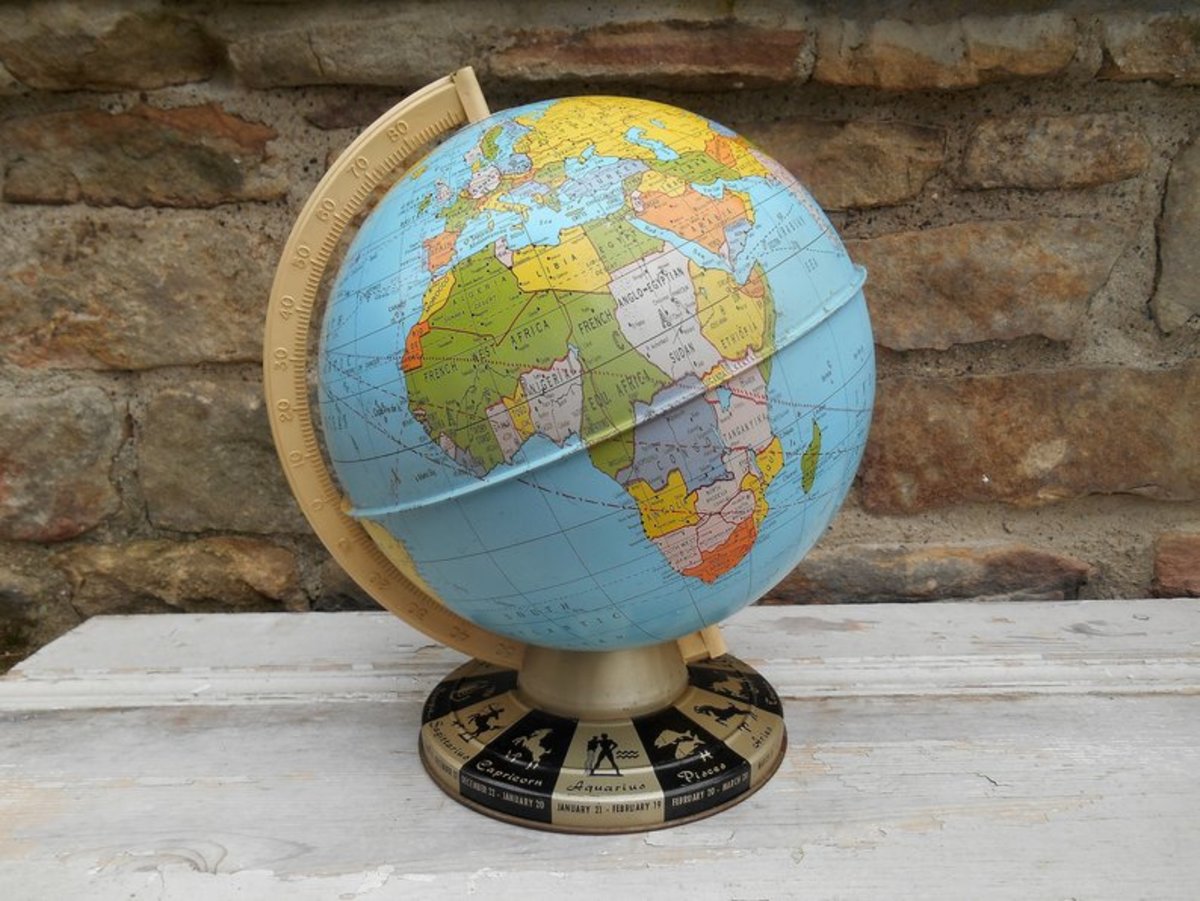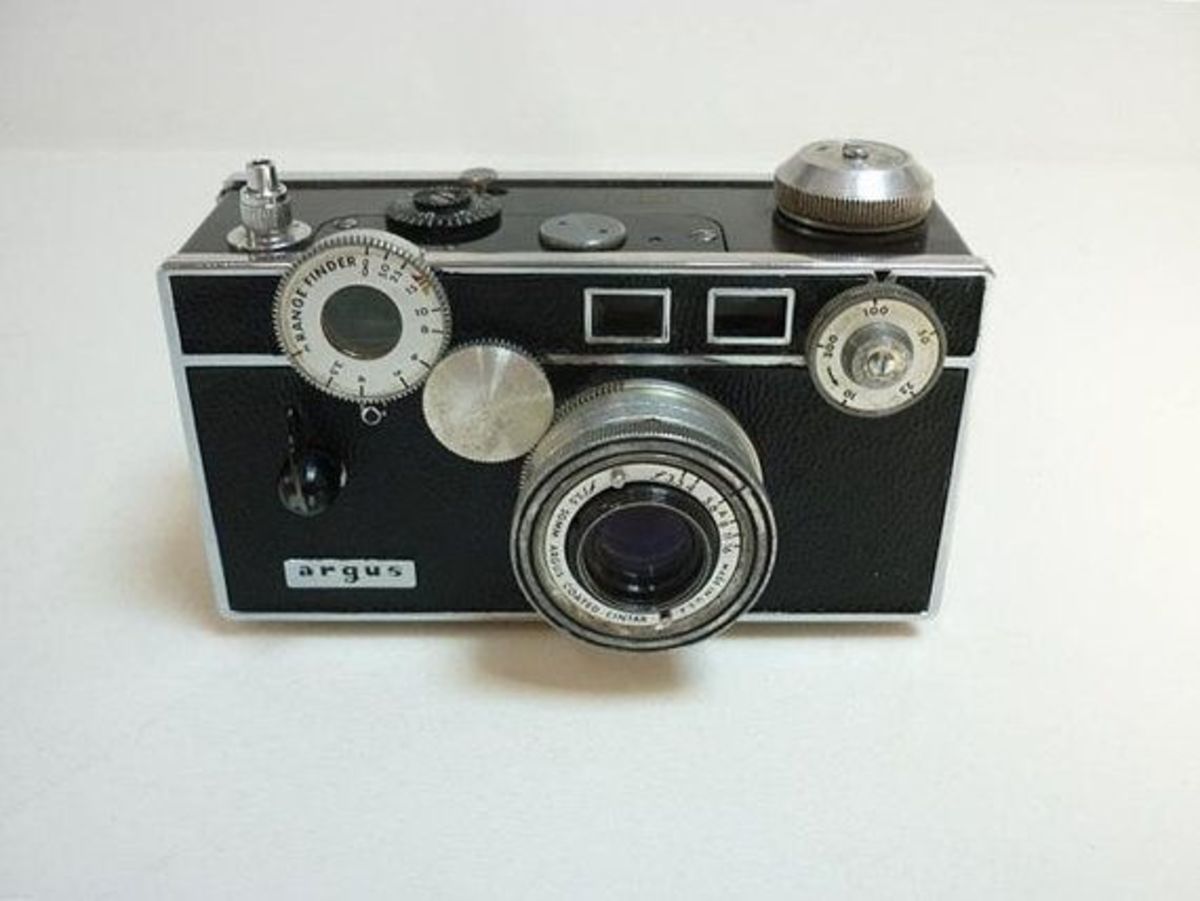How to Open an Online Vintage Shop in FIVE Easy Steps - Etsy and eBay Insider Tips Included!
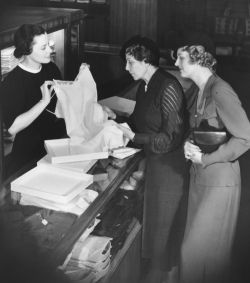
How to source, buy, style, photograph, list, and SELL vintage clothing and jewelry on Etsy and eBay
Have you always wondered what it takes to open your very own online vintage shop? Where to begin, and where to go from there? Maybe you've always had a dream to make a living selling vintage online, but have been putting off taking the first step? Creating an online shop doesn't need to be complicated, especially when you are armed with these FIVE SIMPLE STEPS to setting up a vintage shop on eBay or Etsy; everything from buying your first piece to marketing your fully stocked shop - including insider tips from an experienced seller - so you can spend your time stocking your inventory instead of scratching your head!
Find Your Sources
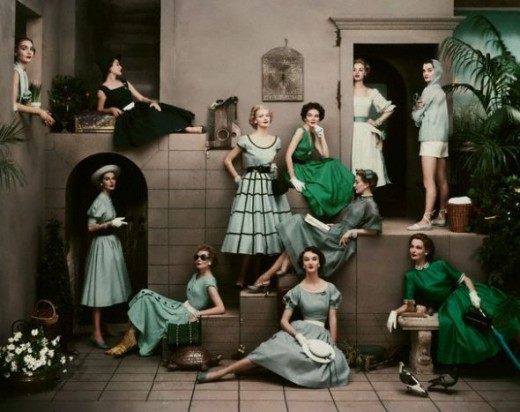
It all starts with the find. A great shop begins with great merchandise. But how do you score magnificent vintage pieces? All the vintage shops in your area seem overpriced, and your local thrift store doesn't look like a goldmine... But don't despair! It only takes a little extra digging to hit vintage pay dirt. Here's my list of go-to spots to snag the best stuff for cheap:
THRIFT STORES
The key with thrift stores is to find the right locations to visit, and then visit them on a schedule. I find that there are certain stores that will consistently have great finds, even if I visit every month (which is my recommended interval between location visits), while others just do not have the kinds of things I am looking for. The correlation seems to be that stores in more residential, settled areas tend to have a higher incidence of pre-1975 garments than ones in areas with higher resident turnover. Makes sense, doesn't it? People buy houses, live in them for several years, collect lots of clothes along the way, then only get rid of them many years later. Now, this does not always hold true for all thrift stores, as some chain stores collect clothing from all over and distribute it throughout their network of locations, which is great news for some vintage hunters, but not all, depending on how much one appreciates the thrill of the find versus a tried and true source.
*TIP: Bring IKEA bags to carry home your finds if you don't have a car; there's nothing more annoying than a huge plastic bag of clothing breaking open in the middle of the street, and it's just so much more comfortable to carry!
YARD/STREET/GARAGE SALES
Look these up in the paper or online beforehand, or learn where the spots are in your town where regular garage sales happen. Often those are unadvertised, but have a great selection of new merchandise every week. Not all garage sales will have vintage clothing (if that's what you're looking for), so this is why it's good to do some research before heading out on your trip. In my experience, I've found that areas with students, or areas with an older population will have vintage clothing included in their outdoor sales. Otherwise, it's fairly random who will have the kinds of things you're looking for. Sometimes you'll score just one amazing piece from a sale, but it's still well worth it.
FLEA MARKETS
It's simply a must for any vintage dealer to visit a flea market at least once in their journeys; however, I will advise you right off the bat that the quality of flea markets varies wildly, and what calls itself a flea market may not actually be a bone-fide one at that. Take a look online and in your local papers for local flea market ads and reviews, and make your own informed decisions before visiting. With that said, flea markets can be wild and wonderful sources of great vintage, if you find the right spots to frequent. Make friends with the sellers, let them know what you're looking for, and give them your card. These sellers often visit estate auctions (which we will discuss below), and other large sales of clothing, so they generally have access to lots of inventory that they will gladly sell to you if you're a willing buyer. Don't be picky, just agree on a price for the types of pieces you'd like, and usually you can get a large lot of clothing for very reasonable per-piece prices.
CHURCH SALES
I list this separately from yard sales, as they can be harder to spot, and a much different kind of atmosphere. Here you probably do not want to use your previously perfected negotiation skills, as the proceeds are in most cases going back to the church, or another charitable group. That being said, as the goal is to raise money, prices are generally very reasonable to begin with, which makes buying in bulk possible. The other advantage to church sales is that the donations tend to come from older people, with correspondingly older items to sell. You will not always find vintage clothing, but jewelry is almost always a staple, as well as interesting accessories.
*TIP - If you like cookies and cakes, hit up the bake sale table. The sweets are always the BEST at church sales.
ESTATE SALES
I've saved the best for last! Estate sales can turn out to be your #1 source of vintage clothing, if you make the right connections. Introduce yourself to the companies handling sales (either in person with a card, or by letter mail and a follow up phone call), and be willing to take whole lots. If they know you're a willing buyer, they'll come to you first. If you're paying a very low per-piece cost, it doesn't matter as much if there are a few duds in the bunch. Once companies know you as a consistent buyer, you'll have more vintage clothing than you can handle!

Get Organized
OK, so you've got a bunch of amazing finds burning a hole in your closet, and you want to get started selling! Well just hold on there a moment, miss/ter, you've got to get organized first!
If you plan to make this sales venture into a full time business, you need to remember a few slightly less exciting, but very important things:
1. All the money you receive, including shipping charges and any other additional handling charges, must be kept track of in detail for two reasons:
a) so you can monitor the health of your business in dollars and cents, not just by how you're feeling it's going (which could be more positive, or even more negative than the numbers show), and
b) this amount must be reported when tax time comes around.
2. All expenses related to your business, including buying inventory, shipping supplies, paying for listing fees, even things like ink cartridges, and bank fees, must also be kept track of in detail, for the same reasons as above.
Gross profit (#1) minus Expenses (#2) equals Net Income.
3. Make a business model. How much do you want to be making for yourself? What is your profit margin? Remember to invest a portion of your profit back into your business. Say you pay $20 for a dress you're going to sell for $60. Out of the $60 you receive, $20 goes to the original cost of the dress, which leaves you with $40. Now, if you want to continue to grow the business, you should put another $20 of that $40 towards buying new merchandise. This way, you are investing back into the growth of the business.
All this being said, it's important that you give some thought to how to make it as easy as possible to maintain your records. I keep an accordion file where I quickly file all receipts (I have files for clothing purchases, office supplies, shipping costs, bank statements, etc.), then every few weeks I go through the file and transfer all the amounts to an Excel spreadsheet, so I can track everything easily.
TIP: Remember to make backup copies of all your important files, including your sales figures, expense sheets, and even bills. You don't want to risk losing all your records and having to work twice as hard to restore everything.

Photo Time!
Now comes the most hands on part of the process. I really enjoy taking my time with photography, making sure to capture every detail I can find on the piece I'm showing. You'll find over time you develop your own rhythm and style of taking pictures, and you'll notice how certain angles look better than others for the light you have, etc. What I'm trying to say is, it's not an exact science, and you'll learn as you go, so don't be afraid to jump in, even if you don't have a... film thumb?
Some quick tips before even getting out the camera:
1. Think about lighting - If you're photographing clothes, I recommend natural light, but not bright sunlight. Right next to a window in the afternoon is great. You'd be surprised what your digital camera can do in what you think might not be bright enough light. I find it more easily allows me to capture textures and details that would fade out in bright light. If you're photographing jewelry or small accessories, I recommend building yourself a light box. It's much simpler than you think, and doesn't cost more than $10, no, I think mine was under $5, to build. Here's a great DIY tutorial to use: http://digital-photography-school.com/how-to-make-...
2. Display choices - Depending on what you are selling, you'll need a way to display it. If your shop will focus on clothing, then a simple wooden hanger always looks nice, or if you are ready for the next step up, you may want to purchase a stuffed mannequin. If you're in the market for a mannequin, don't buy from your local sewing store, as they are ridiculously overpriced; look for a store display wholesaler in your area, who will often gladly sell to the public at very reasonable prices (think $40-100 versus $150-400 at a sewing store). If you're using a simple hanger to display, you will need to put a screw or hook in the wall where you plan to photograph. Make sure to put it at a height appropriate for the very longest item you might ever photograph.
3. Set the scene - I prefer to photograph against a plain wall, but you might also want to consider setting up a corner where you place a furniture piece or two to create some ambiance.
Once you've made your choices about how and where you'll photograph, collect all the items you'll be working with, and make sure they're camera-ready. Iron or steam out any wrinkles, and clean off any lint or pet hair. Arrange the piece carefully on the mannequin or hanger, making sure it looks the way it should from the camera. You may need to clip the garment in the back, using plastic clothes pins, so it properly fits the mannequin, but make sure not to change the shape of the garment in doing so; for example, if it's a 60s dress that falls straight from the bust, don't make it into a 50s wiggle dress by pulling it in all the way at the waist.
TIP: One of the best tools I work with every day is my garment steamer. It eases out wrinkles, and makes old limp clothes fresh and lively again. It's perfect for touching up a garment right before taking photos.
Once the mannequin is looking just right, and the sun is streaming in gently, it's time to photograph! Remember to capture all angles of the garment, as well as several closeups to show texture and detail. I always take the following shots:
1. Full length front
2. Full length 3/4 (turned halfway to one side)
3. Full length profile (from the side)
4. Full length back
5. 3/4 Front (just from the hips up)
6. 1/2 Front (landscape format, just the waist up)
7. 1/2 Back
8. Several macro closeups of details, including a macro shot of the fabric to accurately capture texture and color
Once you have all your shots and have uploaded them to your computer, go through and erase any that are blurry, or are duplicates representing the same basic shot (see list above). You'll be left with a handful of really great images for each item.
ETSY TIP: Etsy is much friendlier to landscape images than to portrait images. For this reason, I generally always combine two portrait images (e.g. a full length front and a 3/4 front) to make one landscape image to use for the main listing picture that will show in listing results. The other pictures in the listing may be portrait format without any issues.
Garment Steamers
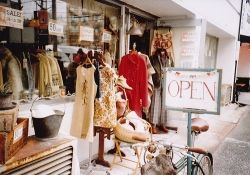
Set Up Shop
Phew! OK, so taking pictures was a bit of work after all. Time to settle down with a nice cup of tea next to your laptop and set up shop!
The first decision to make is where you're going to set up your shop. Currently, the top two sites where vintage sellers are displaying their wares are Etsy and eBay. For the purposes of this guide I'll assume you'll be using one of the two, or even both!
TIP: Etsy and eBay each have their own unique feel, each with its own type of buyer. This isn't to say that vintage lovers don't shop at both sites, but it's undeniable that each site has its own character. eBay is more of a thrift store experience, with buyers wanting to discover hidden gems and purchase them for less than their actual worth. Etsy, on the other hand, has a more upscale boutique feel, perhaps due to their modern, clean interface, which is consistent throughout all shops on the site.
First things first, sign up for an Etsy and/or eBay account, if you don't have one already.
This special Etsy link gives you 40 FREE listings to start selling right away, with absolutely no cost! http://etsy.me/13kGh2N
Give a lot of thought to your shop name, and make it something easy to read, pronounce and remember. You don't want to have someone love your shop, but not be able to find it again because they couldn't remember the name. Choose wisely, and whatever you choose, make it consistent for all your shops, pages, accounts, etc. Remember you're building a brand, and the more you put you name out, the more likely you'll be remembered.
If you'll be selling frequently on eBay, consider signing up for a listing editing service like Auctiva. If you plan to do any bulk editing, copying, filing, etc., you need a tool like Auctiva to save precious listing time: www.auctiva.com
Etsy, on the other hand, has a very neat one page listing editor, so no additional software is needed, in my opinion; however, I find BETSI is a useful 3rd party application that makes bulk editing and batch listing creation much simpler. Betsi offers both a free version, as well as a very reasonably priced full version: http://www.blugrin.com/Betsi/App
As a rule of thumb, anything older than 1950 I list on eBay as well as Etsy, as clothing from that period and earlier is more rare and valuable, with a higher potential for many bids. As Etsy's policies state that all items sold in the Vintage category be at least 20 years old, all items newer than 1993 also go on eBay.
If I have items in my Etsy store that are under-performing (low views/favorites), I will give them a boost by listing on eBay; sometimes it's a quick and easy sale that way, rather than wait for the perfect Etsy buyer to come along.

Marketing 101
Now that you have an amazing shop all set up, it's time to show it off! After all, a shop is nothing without customers. So, how do you get traffic, and ultimately sales in your shop? Well, a fantastic place to start is with social media and social networking. You'll want to make sure to sign up for accounts with these top four social media sites:
1. Twitter - Make sure to tweet all your new additions to your shop, but also give your followers plenty of fresh, interesting content unrelated to your shop. It'll keep them engaged, and also increases your chance of being re-tweeted, which puts you in front of an entirely new network of people.
2. Facebook - Create a page through your normal Facebook account (no need to create a "business" account), but use Facebook as your company page. It allows you to like and comment on things as your business, instead of the activity appearing under your own name. Seek out other company pages to like, and build a network of friends. Post your new shop items, and people may like and share them, putting them in front of a new audience, much like Twitter re-tweets.
3. Stumble Upon - This is just a really fun app, aside from using it for marketing purposes. You'll need Firefox to use this program, which is simply a Firefox Add-On that allows you to specify your tastes and interests, and then "stumble" onto recommended pages at the click of a button. The beauty of this app is that you can rate as you go, so it is always tailoring itself to your exact tastes. You can submit your own discoveries, specify categories, even add tags, so others sharing your interest can find the page, too. I submit many of my item links to Stumble Upon, but I also make sure to vary my submissions with other non-shop related links. Your followers like variety, just like on this last but not least site....
4. Pinterest - Easily my new favorite website, this is a place to share all your favorite images, whether for their own charm alone, or linked to other information (recipes, beauty tutorials, DIY projects). It's maddeningly addictive, and for me seems to fill a need I've had since I discovered the bookmarks feature in Netscape Navigator as a 12 year old girl. Although instead of an ugly list of cryptic link descriptions, it's a beautiful pegboard of glorious imagery, beckoning you to click... So no wonder it's a great place to share some of the fantastic images you took earlier of your pieces. Make sure you're sharing only your best pictures, as Pinterest users truly appreciate an iconic image. If it's nice enough, they'll pin it on one of their boards, too, exposing your item to new eyes.
At the end of the day, any publicity is good publicity. So tweet it, stumble it, shout it, write it on walls, tell your friends to tell their friends to tell their friends... just get your name out there! If you keep your shop ship shape, and have the clientele to appreciate it, you're well on your way to the big time, you magnificent style maven, you!!





